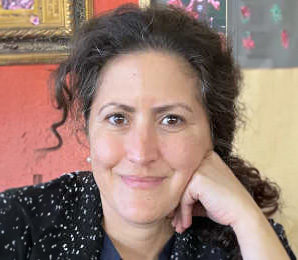
In the aftermath of the shooting at a private school in Nashville that took the lives of three students and three teachers, there’s been an escalation of hateful rhetoric against trangender people, and some journalists have inadvertently contributed to it. Some reporters — in choosing to quote misinformed officials — have also validated the myth that people who live with mental illnesses may be more likely to be mass shooters.
Here are some suggestions to help guide your reporting and constructively contradict misinformation your sources share to report responsibly about mass shootings and trans people, historically marginalized people who have been subjected to harmful stereotypes that have made them targets of personal attacks and hostile legislation. This Associated Press article dispels inflammatory comments by Donald J. Trump, Jr. purporting that there’s been an “incredible rise” in mass shootings by trans attackers.
1. It’s common practice for law enforcement officials to share the gender identity of people who commit crimes, and authorities in Nashville have said that the 28-year-old adult who killed three students and three teachers on Monday was trans. But the police have not said that the shooter’s gender identity is connected to motive, and have not said they know with certainty that the attacker identified as trans.
That has sowed confusion in newsrooms across the country — including our own — and some outlets have been calling on the Trans Journalists Association for guidance. We reached out to Kae Petrin, a co-founder of the group and a data and graphics journalist at the education news outlet Chalkbeat.
“Our advice is to report the facts,” said Petrin, who is nonbinary and transgender and uses the pronouns they and them. “Focus on the victims, focus on the consequences,” among other best practices for reporting on mass shootings that include minimizing the shooters’ identities.
If reporters are going to address the attacker’s gender identity, Petrin said they should explain that officials have shared contradictory information and that no one has confirmed that the shooter self-identified as trans. Petrin also cautioned against relying on family and acquaintances to confirm someone’s gender identity because “not all trans people come out to people in their lives.”
While officials have said that the shooter used multiple names, Petrin said TJA isn’t offering guidance on what name to use to identify the attacker because it is unclear why the shooter was using them. Some newsrooms have opted not to use the first and last name officials have shared until they can confirm the name the attacker used, others have chosen to use the legal name the shooter was reportedly given at birth, the social media the attacker reportedly used, or both, Petrin said.
Among the hundreds of stories about the shooting published this week, Petrin said the reports by NBC’s Jo Yurcaba stand out for their accuracy and thoughtful approach to reporting about the shooter’s gender identity.
Reporters who want to reach out to the Trans Journalists Association can email contact@transjournalists.org.
For more information on how to accurately write about transgender people, take a look at the media guides from the Trans Journalists Association, The Human Rights Campaign Foundation and the NLGJA: The Association of LGBTQ+ Journalists.
2. The vast majority of people who live with depression, anxiety, or other mental illnesses don’t kill people. Severe psychiatric illness is absent in the majority of mass murderers and mass shooters. Media outlets have widely reported that John Drake, Nashville’s police chief, said Hale was being treated for an “emotional disorder.” But Drake hasn’t explained why that was relevant in the investigation of the shooting. Although he said Hale’s parents thought their child “should not own weapons,” Drake didn’t say why they made that statement.
In a post on the institution’s website, Kelly McBride, senior vice president and chair of the Craig Newmark Center for Ethics and Leadership at the Poynter Institute for Media Studies, reminds reporters that “speculation about mental health can be harmful in the absence of concrete reporting.” Jonathan Metzl, a professor of psychiatry at Vanderbilt University, is among academics who study misperceptions about gun violence and people with mental illness. His work includes a 2015 review in which he and the article’s co-author said that “little population-level evidence supports the notion that individuals diagnosed with mental illness are more likely than anyone else to commit gun crimes.”
3. Although there is some debate about whether mass shootings are becoming more common, they are relatively rare especially when compared to “everyday” shootings that draw far less media coverage. USA Today, The Associated Press, and The Washington Post are among media outlets tracking gun violence trends, and you can read more about those efforts in this article. The Philadelphia Center for Gun Violence Reporting and the Pew Research Center are among institutions that offer resources for journalists covering gun violence and the implications of firearm deaths and injuries as a public health issue.
Katherine Reed, AHCJ’s director of education and content, Tara Haelle, AHCJ’s core topic leader for medical studies, and other journalists have written about gun violence in the context of public health for our site. Check out their articles below:
-
- What Journalists Can Do To Report More Effectively — and Compassionately — on Gun Violence
- Reporters shouldn’t profile mass shooters, say experts
- Reporter’s resource focuses on responsible mass shootings coverage
- Most profiles of mass shooters do not include mental illness
- Firearm data resources for reporting on the Orlando mass shooting
- When will it stop?: Covering gun violence as an ongoing health crisis (plus resources)






